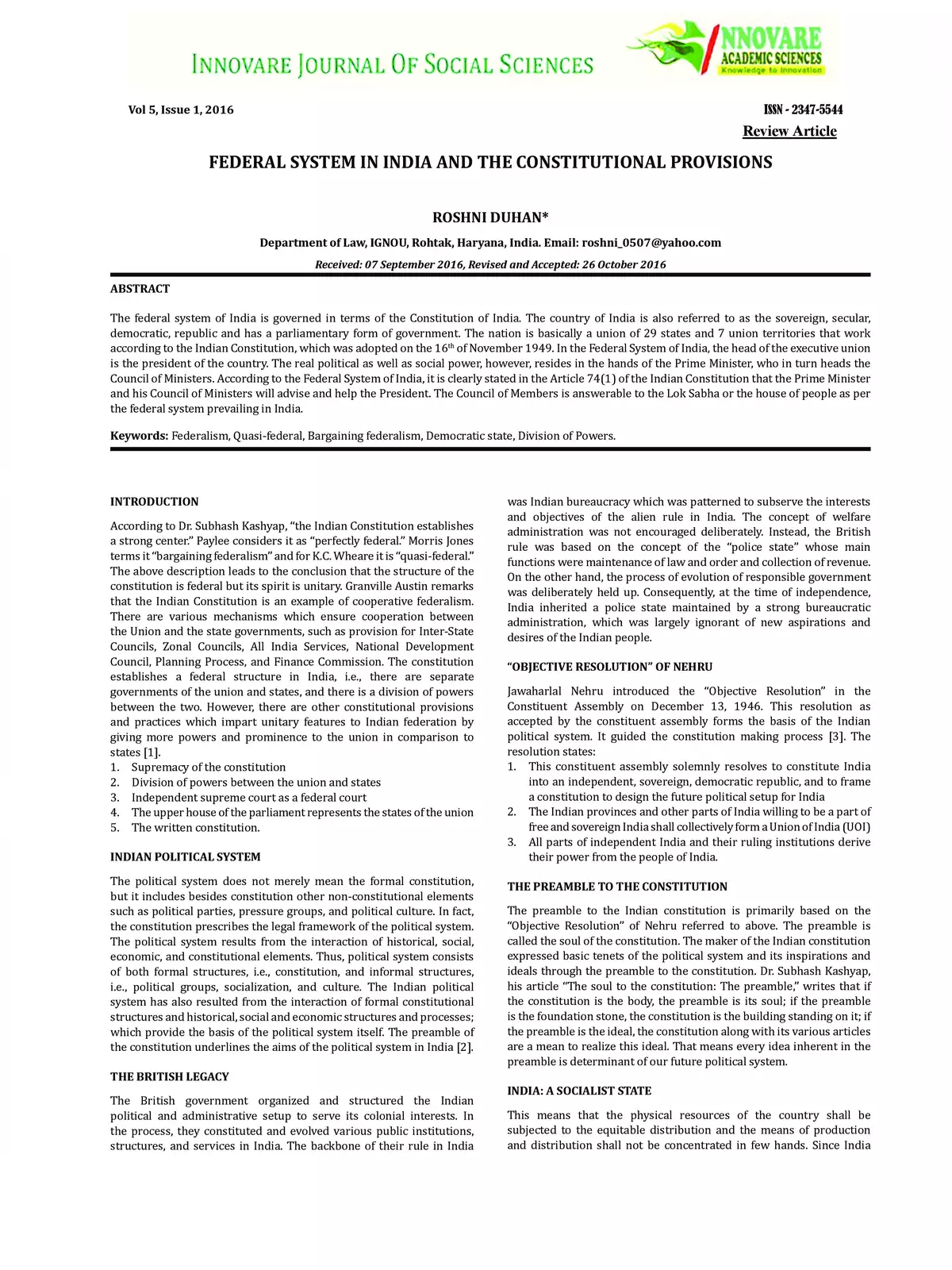Federal Features of Indian Constitution - Summary
A federal government in India is defined by the powers shared between the national government and the regional governments as outlined in the Constitution. Understanding the federal features of the Indian Constitution is essential for recognizing how governance functions across different levels and how laws are made. In this guide, we will explore the key aspects of India’s federal structure, providing you valuable insights that you can download as a PDF.
The federal features of the Constitution of India are explained below:
1. Dual Polity:
The Indian Constitution creates a dual polity, which includes the Union at the Centre and the states at the Periphery. Both gain sovereign powers to operate independently in their respective areas assigned by the Constitution. The Union government handles national matters such as defence, foreign affairs, currency, and communications. In contrast, the state governments manage regional matters like public order, agriculture, health, and local governance.
2. Written Constitution:
The Constitution is not only a written document but also the longest Constitution in the world. Originally, it included a Preamble, 395 Articles (divided into 22 Parts), and 8 Schedules. As of 2013, it consists of a Preamble, about 465 Articles (divided into 25 Parts), and 12 Schedules. This thorough documentation clarifies the structure, organization, powers, and functions of both Central and state governments, helping to prevent misunderstandings between them.
3. Division of Powers:
The Constitution clearly divides powers between the Centre and the states through the Union List, State List, and Concurrent List outlined in the Seventh Schedule. The Union List covers 100 subjects (originally 97), the State List has 61 subjects (originally 66), and the Concurrent List contains 52 subjects (originally 47). Both the Centre and the states can legislate on matters in the Concurrent List, but in case of a conflict, the Central law takes precedence. Any subjects not mentioned in these lists are given to the Centre.
The Constitution stands as the supreme law of the land. Laws made by both the Centre and states must align with its provisions. If not, they can be declared invalid by the Supreme Court or High Court through their judicial review power. Therefore, the legislative, executive, and judicial branches at both levels must function within the limits set by the Constitution.
5. Rigid Constitution:
The Constitution’s division of powers and its supremacy can only be maintained if its amendment process is strict. This rigidity means that provisions related to federal structure, such as Centre-state relations, can only be amended through collaboration between the Central and state governments. Amending these provisions requires a special majority of the Parliament along with approval from at least half of the state legislatures.
List of Important Articles of the Indian Constitution
6. Independent Judiciary:
The Constitution establishes an independent judiciary led by the Supreme Court for two main purposes: first, to uphold the supremacy of the Constitution via the power of judicial review, and second, to resolve disputes between the Centre and the states or among the states themselves. The Constitution includes measures such as security of tenure for judges and fixed service conditions to ensure that the judiciary remains independent of the government.
7. Bicameralism:
The Constitution provides for a bicameral legislature with an Upper House (Rajya Sabha) and a Lower House (Lok Sabha). The Rajya Sabha represents the states of the Indian Federation, while the Lok Sabha represents all the people of India. Though the Rajya Sabha possesses less power, it plays a crucial role in maintaining federal balance by protecting state interests against any undue interference from the Centre.
For additional details, feel free to download the Federal Features of the Indian Constitution in PDF format using the link given below.
